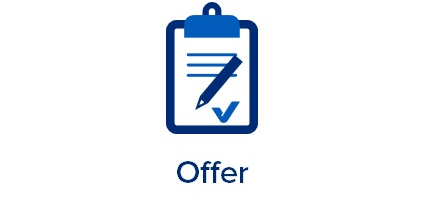
Residual life assessment (RLA)
In an increasingly competitive market, an industrial operator needs an optimum level of reliability and safety to meet modern economic and environmental challenges. This is why, for over 140 years, Vinçotte has been carrying out pressurised equipment inspections for a great many industrialists. Efficient management of maintenance costs and long term investment planning require a precise knowledge of the structural integrity and residual life of production equipment.
Vinçotte has complemented its expertise by offering assessment services for residual life of components subject to corrosion, erosion and creep. The methodology is based on the American standards API 579-1/ASME FFS-1 recently published by the American Petroleum Institute.
Assessment of the residual life of components subject to creep
Creep is a fault widely encountered in industrial applications. A component subjected to a temperature greater than 350°C is liable to deform under a load lower than the yield strength of the material. The deformation is due to a development of the material's structure following exposure to high temperature for a determined time.
Vinçotte carries out residual life assessments on all components subject to high temperatures depending on the equipment's actual conditions of use.
Vinçotte bases its assessments on material data provided by the MPC Project Omega that carried out creep tests on a large part of the materials detailed in the ASME II and commonly used in the field of high temperatures.
If past conditions of service are uncertain or if the material's creep data is unknown, Vinçotte can, at the users' request, carry out creep tests on components sampled on site.
Knowledge of the true constraints is an essential variable for residual life assessment. For example, taking into account the constraints due to supports in the case of piping considerably improves the reliability of the results obtained. Vinçotte has engineers capable of carrying out stress calculations or finite element method calculations if necessary.
In order to increase the reliability of the results obtained by the residual life calculation, Vinçotte offers to complement the assessment by the following non destructive tests:
- visual inspection of components with ovalisation measurements
- inspection by magnetoscopy
- ultrasound inspections with determination of residual thickness
- hardness measurements
- metallographic replicas
The non destructive tests are performed by qualified inspectors based on qualified procedures.
Vinçotte carries out a single report detailing all the results of the various inspection techniques chosen in collaboration with the user.
The global report is complemented by a series of recommendations on repairs and/or modifications, on new service conditions if necessary and on future inspections to be planned in order to optimise the reliability and safety of equipment operated by the user.
Residual life assessment of components subject to corrosion and/or erosion
Corrosion is a degradation mechanism widely encountered in industry. Steel producers estimate that a quarter of production is used to replace corroded steel.
When the reduction in thickness is greater than the tolerance provided for during the equipment's design, an assessment of residual thickness is required to determine the level of reliability and safety of the equipment operated by the user.
Vinçotte offers assessments of the component's life taking into account theoretical degradation speeds and/or measured degradation speeds through a series of inspection.
The methodology is based on the American standards API 579-1/ASME FFS-1 recently published by the American Petroleum Institute.
Vinçotte offers suitable ultrasound test procedures to the operator depending on the precision required for the assessment. Provided that the service temperature allows it, the inspection does not require the equipment to be stopped.
The non destructive tests are performed by qualified inspectors based on qualified procedures.
Vinçotte can carry out a spectral analysis of the deposit formed by corrosion in order to determine the agents responsible for the corrosion thus enabling the operator to take the necessary corrective measures to avoid the degradation mechanism.
Vinçotte carries out a single report detailing all the results of the various inspection techniques chosen in collaboration with the user.
The global report is complemented by a series of recommendations on repairs and/or modifications, on new service conditions if necessary and on future inspections to be planned in order to optimise the reliability and safety of equipment operated by the user.
better knowledge of the equipment's structural integrity
- assistance in deciding on and planning investments in terms of maintenance and inspection
- better safety level of the equipment
- better reliability level of the equipment
- better synergy between different inspection techniques
- increased credibility, among others with the authorities, by intervention of a neutral, independent party and with international reputation.
Norms and standards
Vinçotte engineers and inspectors carry out their missions based on internationally recognised industry standards.
- American codes: API 510, API 570, API 573, API 574, API 575, API 579-1/ASME FFS-1, API 580, API 581, API 653
- European code: Fitnet (under construction), BS 7910, EN 12952-4,…
Vinçotte's inspection services are also approved by various national authorities to carry out regulatory inspections and assess the inspection programs for pressurised equipment
Interested in this solution? Contact us!
Contact
Ask your question directly to the specialised team within your sector.


